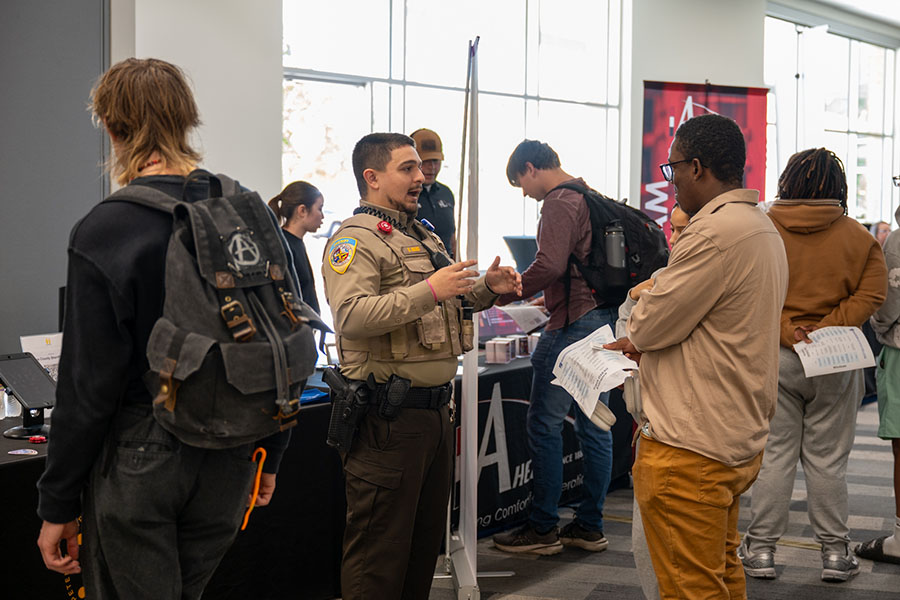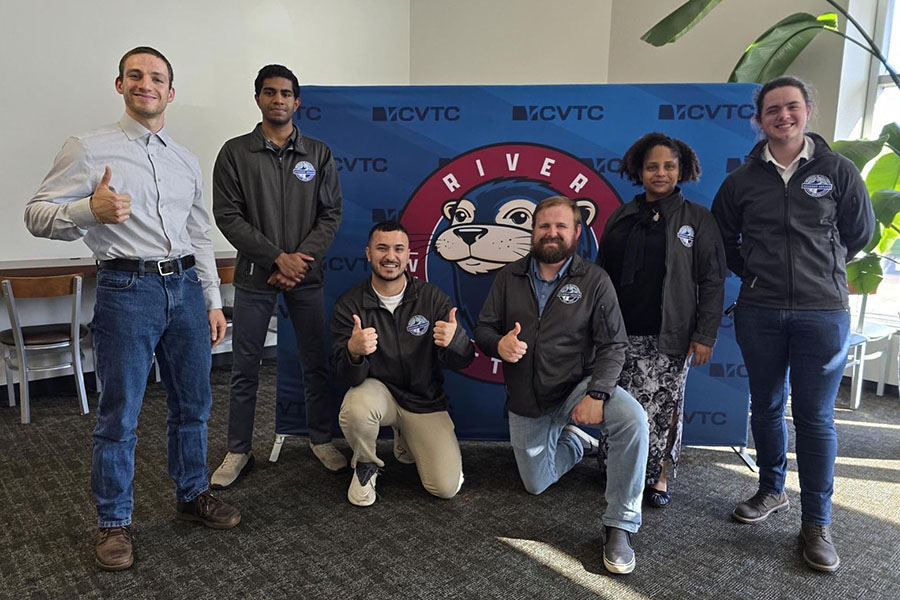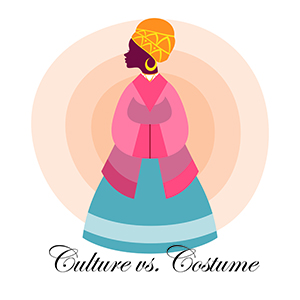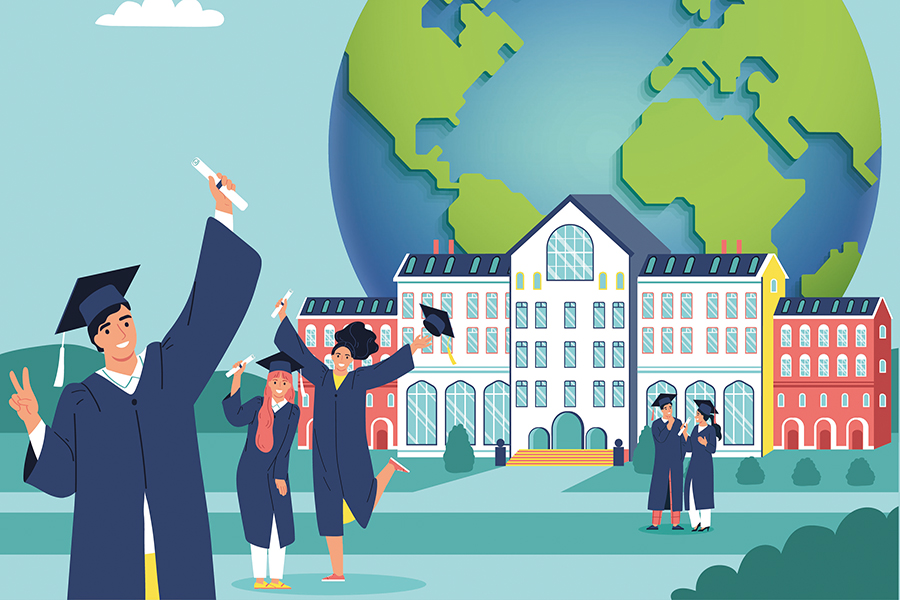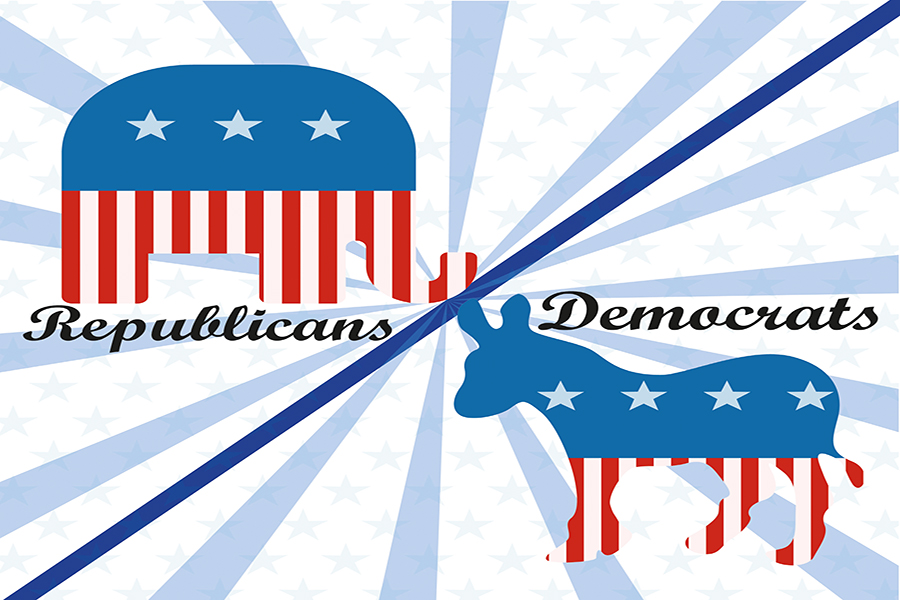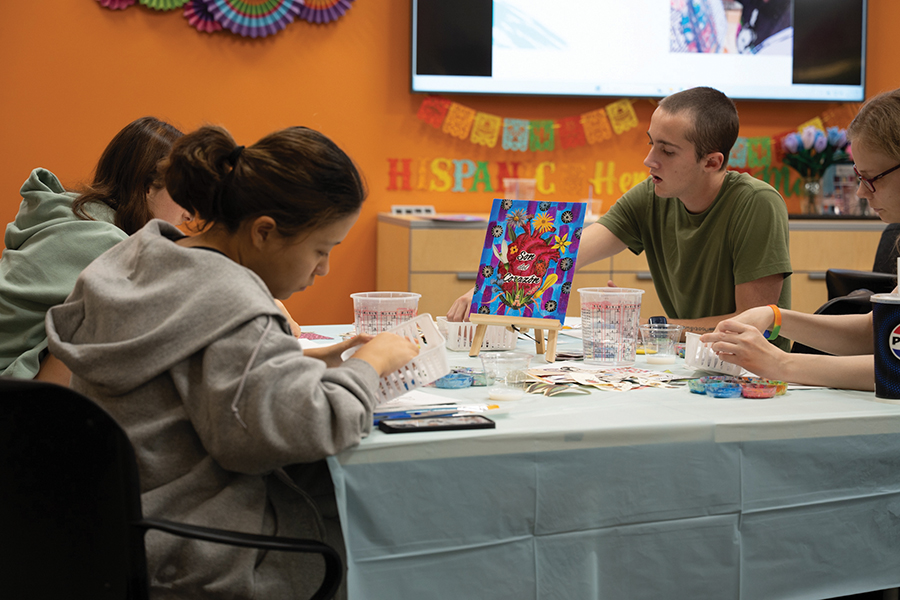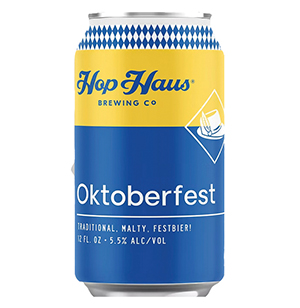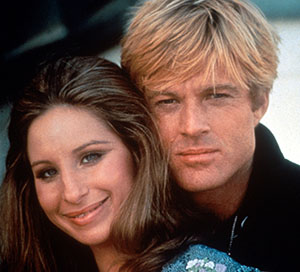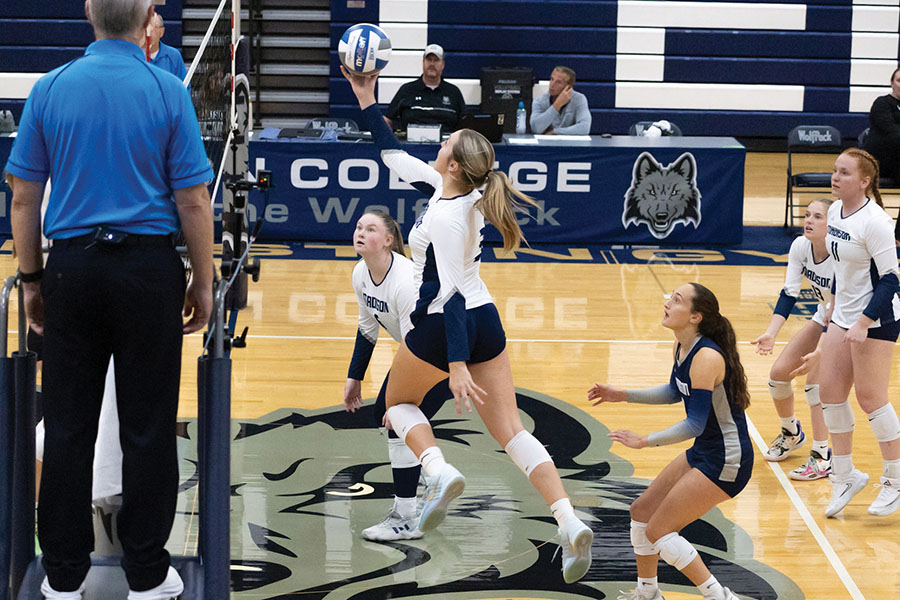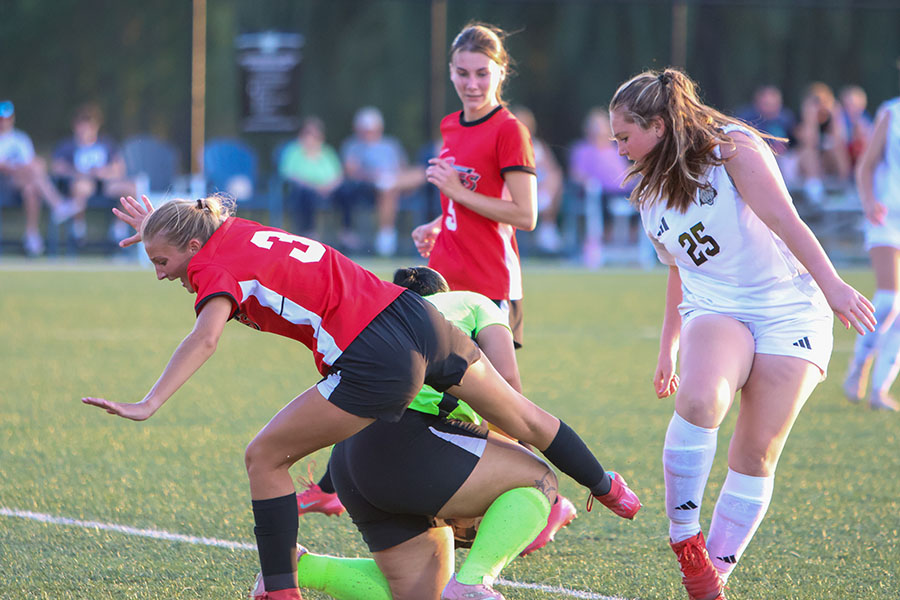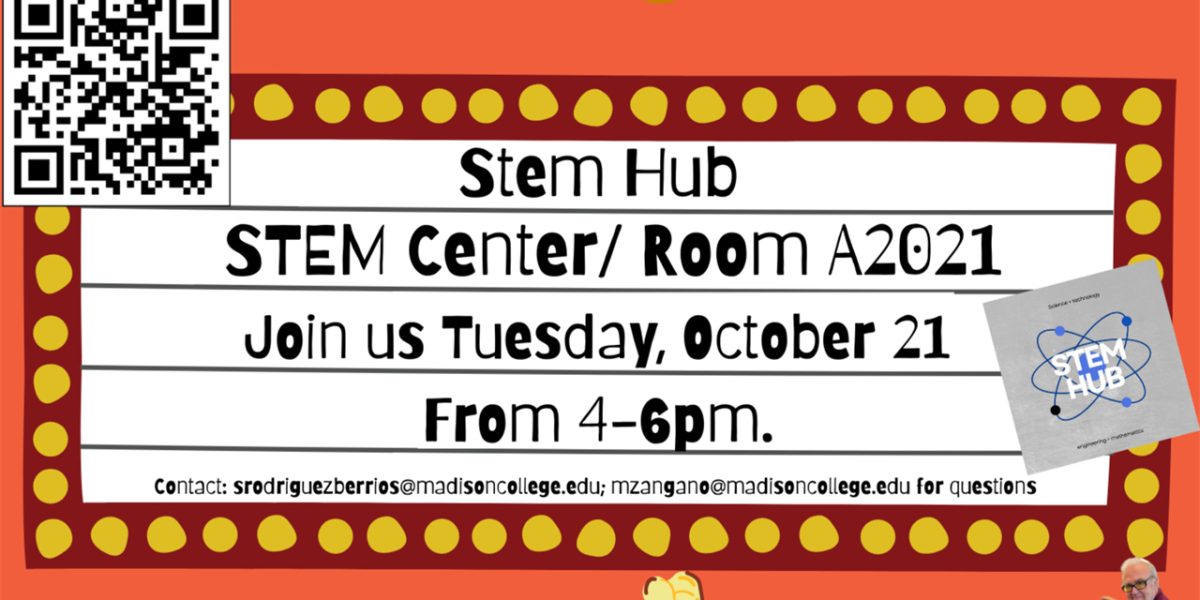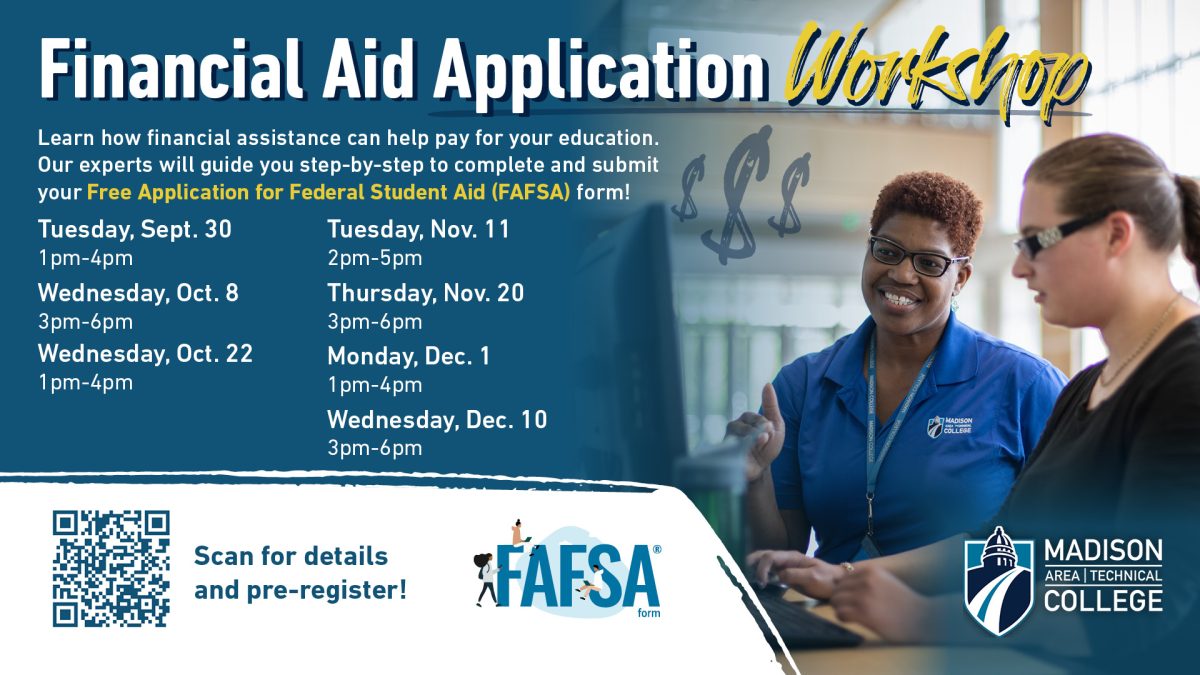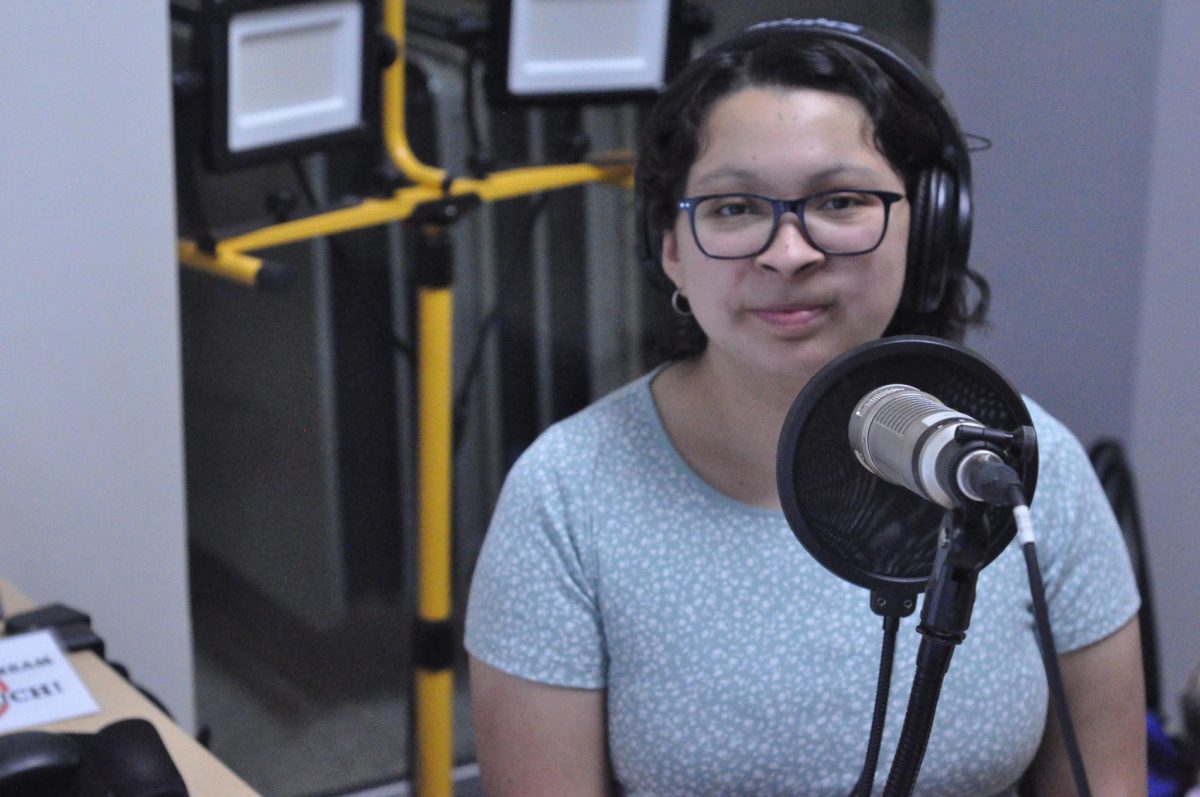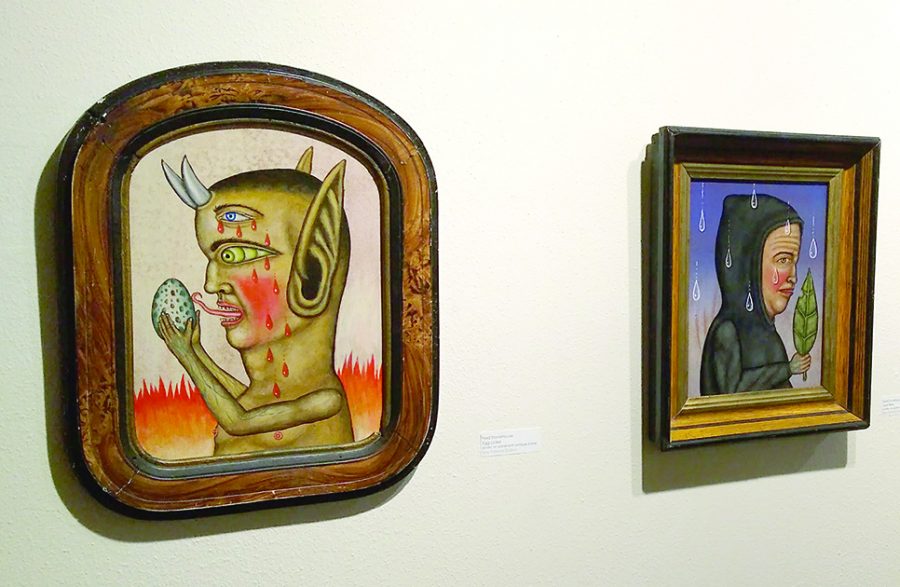Inner Realities on display at Gallery 211
Work by Fred Storehouse, an associate professor of painting and drawing at the University of Wisconsin, is on display at Gallery 211.
October 11, 2017
One step into the 211 Gallery in the Downtown Campus and you might be struck by some of the earthen-hued ceramics, bold colored paintings with intricate framing, or the large mixed media piece that takes up a large part of one wall. The gallery is currently hosting “Inner Realities,” an art show aiming to give us a glimpse of a new type of reality. The artists featured in this show have turned their focus inward, bringing forth a world where the familiar and unfamiliar collide.
Six artists are featured in this show, which runs until Oct. 13.
Barry Roal Carlsen is a Madison resident who divides his time between his studio and teaching at Madison College and UW-Madison.
“I currently have two bodies of work I’m creating. The first being a continuing series of paintings focusing on landscape. In a broader sense, I want to convey the physical and psychological impact the landscape has in shaping people. A sense of place is powerful; it can express the feelings of belonging, separation, distance, and loss. Landscape as avatar,” he said in a statement.
“I’m increasingly involved in creating a body of work that focuses more directly on personal relationships and the human condition. This series of predominately print-based works involve a wider set of graphic motifs and rely heavily on the assets that printmaking provides.”
Kelli Hoppmann was educated at the University of Wisconsin-Madison, and has been exhibiting in the Midwest for the past 30 years. She has also been active in creating “found space” exhibits in the Madison area with the art group Artbite. She collaborated in mounting an art book show featuring 30 artists from around the country. The show was chosen as one of the five best events in the Madison Book Festival, by the Wisconsin State Journal. She has taught figure painting at the University Extension in Madison. Kelli has two children, and lives in Madison.
Don Kauss received a Bachelor’s degree in Fine Art from UW-Madison in 1995, and Master of Fine Arts degree in sculpture from Arizona State University in 2003. He has lived and worked in the Alaskan tundra and the Senora desert of Arizona. Currently residing in Loganville, Kauss continues his work based on a profound connection with nature. Working with found objects, he breathes new life into that which was previously discarded. One of the larger and more striking works at the exhibit incorporates license plates, bones, feathers and other objects into something primal.
“When I was 5 years old, I stumbled across an abandoned barn while walking in the woods, out behind my grandparents’ farmhouse in northern Wisconsin,” Kauss said in a statement. “The old tools, rusty machines, rotten leather horse harnesses, and other scattered items of junk did not register as detritus to me. What I saw was magic in the textures, patinas, and faded colors of the scene I was mesmerized by. Among the debris, several different animal skeletons speckled the scene, and their presence among the other parts and pieces made sense.”
Randall Berndt is the former assistant curator at the James Watrous Gallery at the Overture Center for the Preforming Arts, and was the director of the Wisconsin Academy Gallery in Madison. He received a master’s degree in painting from UW-Madison in 1969 and has built an award-winning career balancing artistic pursuits with the demands of the “real world.”
“I like to think of my art as composed of ‘made-up stories’, but that they are not entirely baseless. My artistic project involves romancing, cajoling my interior story images out into pictures with shape and depth and implied movement,” he said.
“What seems interesting here in the 21st century is that art making is just the same as it ever was. Despite the wizardry of digital technology in creating alternative realities, the old-fashioned rendering of images with a pencil and eraser and paper seems strangely ever more appealing, touchingly human.”
Greg Schulte, an instructor at Madison College, aims to create alien realities that invite multiple interpretations. Schulte said “Inner Realities” features local Wisconsin artists that create works that continue the spirit of the surrealism and magic realism movements.
“My contributions to this exhibition depict subjects that are both real and imagined. The familiar and unfamiliar comingle to form hybrid subjects that I hope are simultaneously grotesque and beautiful,” Schulte said.
Gerit Grimm was born, and grew up in Halle, German Democratic Republic. In 1995, she finished her apprenticeship, learning the traditional German trade as a potter and worked as a journeyman for Joachim Jung in Glashagen, Germany.
In a statement on her work, Grimm said, “The central idea for my artwork is to transgress the boundaries of folk art and fine art by means of the following method: appropriate historically significant folk art and theatrical genres and interpret them through visual idioms of contemporary sculpture. My work appropriates historical narrative subjects deriving from fables, myths and interprets them in forms that have visual and conceptual affinities with contemporary fine art-affinities that allow me to further explore and question the boundaries between pop art, kitsch and high art.”
Fred Stonehouse was born in 1960 in Milwaukee. He received his bachelor’s in fine arts from UW-Milwaukee in 1982. He is currently an associate professor of painting and drawing at the University of Wisconsin.
“I have long been interested in the idea of history, and how it is understood through memory. By history, I don’t necessarily mean the official record of our collective past, but something more along the lines of a personal recollection of one’s life experiences and learning. The ways in which we recall events and how we express them in language always create a new memory or a new interpretation. Our struggle to capture some semblance of truth or factual history is almost comical in its failure, but that same struggle is what makes us human and is one of the only ways we know to arrive at connection with ourselves and others,” he said.
“In this group of paintings and works on paper, my characters are seen attempting to communicate in various ways. They weep, bleed, sweat and speak to each other, never quite connecting in the ways that they had hoped to. The inexact nature of their limited language leads them to half expressed thoughts and doubly expressed emotions. The earnest attempts at communion are simultaneously poignant and ridiculous.”
Theresa Abel studied painting both at the UW Madison and the Scuola Lorenzo de Medici, Florence Italy. Shortly after graduating she became one of the founding members of the Madison arts collective, ArtBite, which exhibited in and around the Madison area from 1994-2008. She is currently the owner/director of the Abel Contemporary Gallery, a fine art and fine craft gallery, located in Paoli.
Abel’s interest in theology, and art history led her to stylistically reference medieval painting. Her most recent work combines oil painting and silverpoint drawing to create works that seem ancient and contemporary. Some pieces pose a critique of contemporary Christianity, and others simply work on composition and portraiture.
Ryan Myers has contributed various ceramic figures to this show. In a statement, he said: “I was raised on cartoons and comic books, superheroes and villains. I grew up around Native American artifacts and American antiques. I learned to appreciate the intimate qualities of aged objects: the textures of rusty iron, crawling paint on old furniture, and even the musty smell of ripened books and magazines. Things that come with embedded narrative, and a worn history have always surrounded me, and therefore, influence me.”
John Wilde (1919-2006) was one of the Midwest’s leaders in the American surrealist movement, and a respected painter, draftsman, and master of silverpoint. His powerful works are just beginning to be realized for their brilliance and impact on American art. Instructor Gregory Schulte has added pieces from his collection of Wilde’s work for this show.
Karl Priebe was born in Milwaukee in 1914 and later died there in 1976. He studied at the Layton School of Art in Milwaukee and later became a faculty member there after studying at the Art Institute of Chicago. He had also worked at the Milwaukee Public Museum and was the director of the Kalamazoo Art Museum in Michigan.
Often called a “fantasist,” Priebe preferred to describe his work as “tempered realism – realism filtered through the imagination.”
His pictures characteristically have a nocturnal, dreamlike quality with subject matter that usually includes birds and African-Americans. Priebe established friendships with such entertainers as Billie Holiday, Pearl Bailey, and Dizzy Gillespie.


